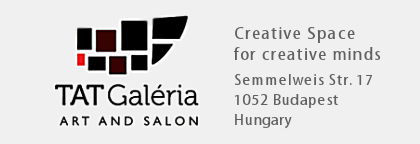Details
- 2013-08-26
- 0
- 133
- 2013
- Painting
- Aerosol Paint
- Religion
Pricing
Price and availability not indicated

- NZUMBE -
Description by Mister 13
Aerosol spray and kleenex on canvas, 3 coffee and 5 cigarettes. PLEASE LISTEN TO THIS SONG WATCHING AND READING THE TEXT TO CATCH THE VIBE www.youtube.com/watch?v=cISbax… Just like with vampires, werewolves and other creatures the zombie idea too has its grounding in ancient legends, religions, traditions. It was not just made up out of thin air by movie-makers. The concept has been part of human consciousness for a long time - maybe because there is some reality to it. Haitian and African systems of voodoo teach the "Zombification" of people through a number of spells and by use of various powders and potions. People who have been administered such drugs are buried at funerals and then dug up again to then exist as a Zombie. The reanimated undead are used as slave labor. To keep them in a state where they lack a will of their own, one must continue to give them a variety of drugs. The Zombification of people is real enough to be considered a crime at the same level as murder in the Haitian legal books. The origin of the concept of zombiism stems from Haitian Voodoo culture. The word zombie--in Haitian it is "zombi"--means "spirit of the dead." Voodoo folklore contends that Bokors, Voodoo priests that were concerned with the study and application of black magic, posessed the ability to ressurrect the deceased through the administration of coup padre--coup padre is a powder that is issued orally, the primary ingredient of which is tetrodoxin, the deadly substance of the notoriously poisonous fou-fou, or "porcupine fish." According to lengend, "a zombi(e) is someone who has annoyed his or her family and community to the degree that they can no longer stand to live with this person. They respond by hiring a Bokor..to turn them into a zombi(e)." Once they had been issued the coup padre, the subjects being prepared for their descent into zombidom would appear to die insofar as their heart rate would slow to a near stop, their breathing patterns would be greatly subdued and their body temperature would significantly decrease. The public, thinking that the person was dead, would bury him/ her as if they were a corpse. They would then be exhumed, still alive, by the Bokor and, although their physicality remained intact, their memory would be erased and they would be transformed into mindless drones. "Though still living, they remain under the Bokor's power until the Bokor dies." Bokors in the religion of vodou are sorcerers or houngan (priests) or mambo (priestesses) for hire who are said to 'serve the loa with both hands', meaning that they practice both dark magic and light magic. Their black magic includes the creation of zombies and the creation of 'ouangas', talismans that house spirits.The name Bokor can also refer to the leader of the Makaya division of Vodou (which originated in the Congo region) and Bokor also refers to the highest initiation rank in Dominican Vodou. Bokors are featured in many Haitian tales and are often associated with the creation of 'zombies' by the use of a deadening brew or potion usually containing poison extracted from puffer fish. This potion makes the drinker appear to be dead and thus he is often buried; later, the bokor will return for the "corpse" and force it to do his bidding, such as manual labor. The "corpse" is often given deliriant drugs, mainly datura, which puts them in a detached, somewhat dreamlike state. Its state is likened to being mind controlled. The person is alive but in a state where they cannot control what they say or do; at this point, when the person has been "reanimated" from the grave, or at least is moving about working for the bokor, they can be termed "zombies." However, some legends dispense with this more rational explanation, and have the bokor raise zombies from dead bodies whose souls have departed. Also, bokors are said to work with zombi/zombie astrals - souls or spirits which are captured in a fetish and made to enhance the Bokor's power. Bokors normally work with Loas Baron Samedi, Kalfou, Legba and Simbi (snake loa) plus in some cases they are said to work with Grand Bois, the loa of the forest. Bokors are similar to the "root workers" of voodoo and New Orleans voodoo. Some may be priests of a vodou house. Bokor are usually chosen from birth, those who are believed to bear a great ashe (power). A Bokor can be, by worldy terms, good or evil, though some sources (Judeo-Christian) consider him an evil version of a houngan. Taken from the Catholic Bible: And the LORD will send a plague on all the nations that fought against Jerusalem. Their people will become like walking corpses, their flesh rotting away. Their eyes will rot in their sockets, and their tongues will rot in their mouths. On that day they will be terrified, stricken by the LORD with great panic. They will fight their neighbors hand to hand. Zecharia 14:12-13 But after the three and a half days a breath of life from God entered them, and they stood on their feet, and terror struck those who saw them. Revelation 11:11 So I prophesied as he commanded me, and breath entered them; they came to life and stood up on their feet–a vast army. Ezekiel 37:10 Greek and Roman black magic was obsessed with ghosts (possibly, this is because both cultures favored cremation as a burial practice, so not many corpses were around to be reanimated), especially with how to manipulate them to do one’s bidding. Those who died by accident, murder, or some other untimely death were especially vulnerable to would-be necromancers, because they were condemned to wander the earth (or be tied to their graves) until the time of their “natural” deaths arrived and they could move on to the Underworld. Until that time, a living person could inscribe instructions on a “curse tablet” made of lead or papyrus, roll it up, and slip it into a grave in order to control the spirit of the dead person to do the bidding of the living. Some of these tablets could be found inside ancient wax equivalents of voodoo dolls. So, you have pre-Caribbean voodoo zombies and Stoker-style vampires—but as ghosts. The Zombie is known as Jiang Shi in China, Ganshi in Korean and Kyonshi in Japanese. Is a type of reanimated corpse In the day, the jiangshi rests in a coffin or hides in dark places such as caves. At night, it moves around by hopping, with its arms outstretched. It kills living creatures to absorb their qi (life essence). The causes of a corpse being reanimated can be classified in two groups: a recently deceased person returning to life, and a long buried corpse not decomposing. A ro-langs is a zombie-like creature from Tibetan folklore. Ro is the word for corpse and Langs is the perfect tense of "to rise up", so Ro-Langs literally means "a risen corpse". A ro-langs is usually created by a gdon spirit, or a sorcerer. A ro-langs cannot speak or bend over, it signals its victims by wagging its tongue back and forth. They can not bend at any joints, which makes them walk with a stiff-armed lurch. In regions of Tibet there are low doorways to keep the ro-langs out. Demonic ro-langs are created by an evil spirit with the goal of contaminating other humans. In Hindu folklore, the vetala is an evil spirit who haunts cemeteries and takes demonic possession of corpses. They make their displeasure known by troubling humans. They can drive people mad, kill children, and cause miscarriages, but also guard villages. So there´s a strong background about it, and hope it helps you to know more about it, after all that zombie-retarded-brain eaters-hollywood invasion.







